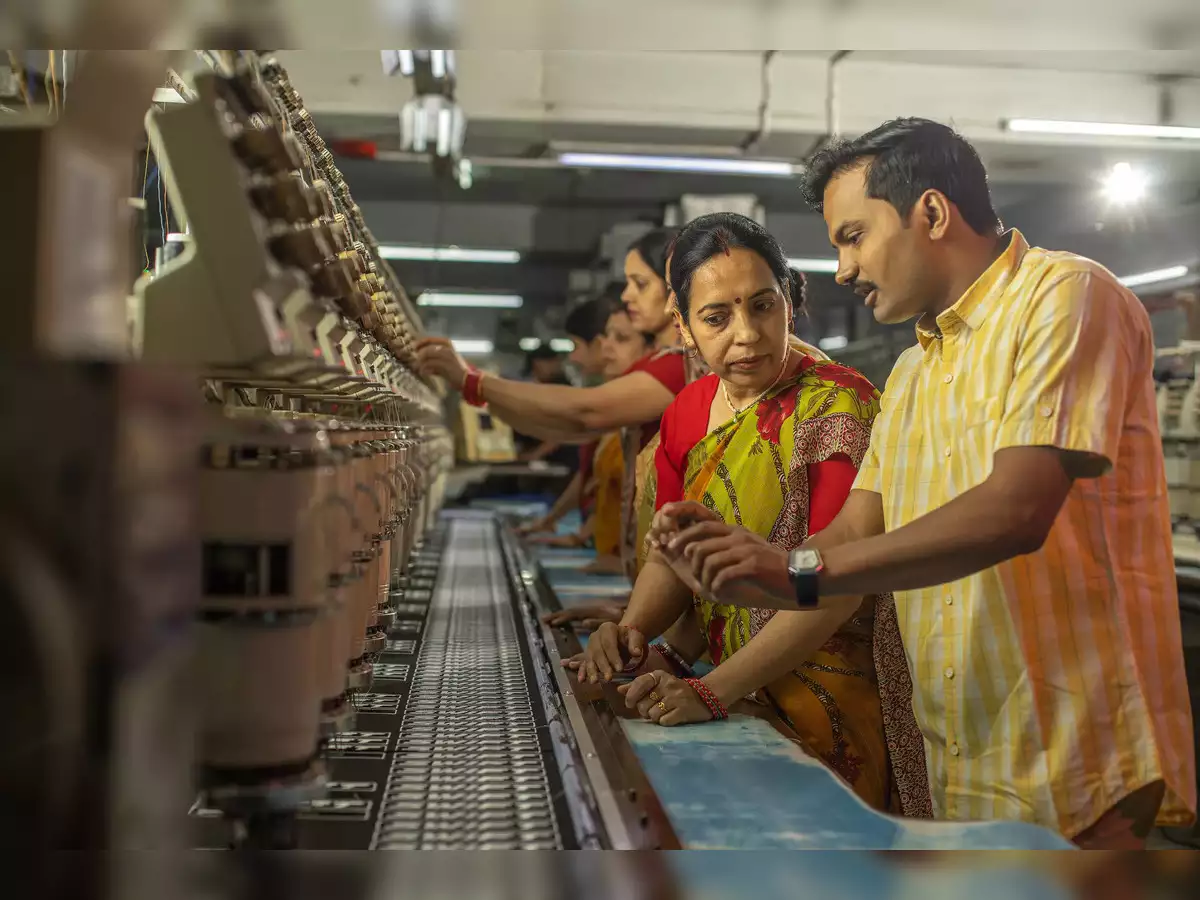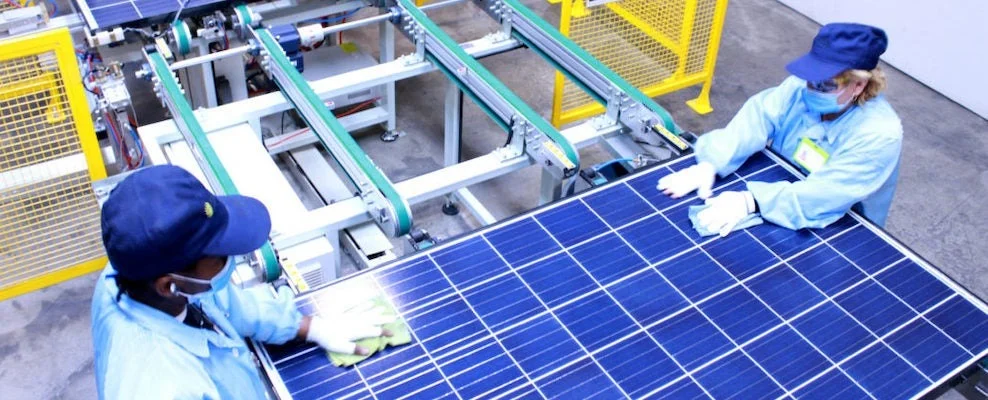- Finance Minister Boosts MSME Lending with Rs 1.5 Lakh Crore Increase in Public Sector Bank Targets for FY25
- Golden Visa Shake-up: Spain, Portugal, and Switzerland Phase Out Schemes While Hungary Reintroduces Residency Pathways
- Bank of Baroda Expands Branch Network and Strengthens Retail, Agriculture and MSME Focus
- PSBs to focus on accelerating pace of lending to agriculture & MSMEs
Hey, like this? Why not share it with a buddy?

Growth is driven by strong domestic demand, export potential, Government infrastructure efforts, private sector investment, and initiatives like ‘Make in India’. According to a Study Report by IDBI Capital, India is set to add US$ 1 trillion to its gross domestic product (GDP) every 18 months over the next six years. It goes on to say that “with this momentum, the country is on track to become a US$ 10 trillion economy positioning itself as the world’s third-largest economy by 2030”. Currently, India has a GDP of US$ 4 trillion. The report has also highlighted that “India’s accelerated growth will be driven primarily by the manufacturing sector, which is projected to contribute 32% to the incremental Gross Value Added (GVA)”. It adds “India will overtake the top five economies in manufacturing IIP (Index of Industrial Production) viz. US, China, Germany, South Korea and Japan. Manufacturing essentially involves the production of a wide spectrum of consumer products, industrial machinery and so on. It is the most important component of Industrial activity at a broader level which also includes Construction (primarily building infrastructure); Logistics (transportation and storage of goods); Aerospace (aircraft and spacecraft etc.) and maintenance and services required to support industrial activities. The contribution of the Industrial sector to India’s GDP is around 30% of which manufacturing alone is 17%. The share of Agriculture and allied activities in GDP is around 18%. The remaining 52% comes from the Services sector (SS). The SS encompasses ‘intangible’ services such as education, health, entertainment, hospitality and tourism, banking, insurance and so on. While, all three sectors play a crucial role in growth, creating jobs and increasing incomes, manufacturing can provide a more sustainable basis for providing jobs and surety of income. This is in sharp contrast to agriculture which is fundamentally a seasonal activity and economic fortunes are largely tied to how monsoon pans out. Manufacturing can also provide a good buffer for absorbing the excess workforce from agriculture with positive spin-offs even for the latter in terms of higher productivity and income. Within the manufacturing sector, Micro, Small and Medium Enterprises (MSMEs) occupy a pivotal position. The MSMEs are ancillary units engaged in the production, manufacturing and processing of goods and commodities (mostly intermediate goods) which are supplied to large enterprises or master units. These units operate on a small scale and are further categorized into micro, small and medium enterprises depending on the ‘investment’ and ‘turnover’ threshold. According to the Ministry of Statistics & Program Implementation, the share of MSME manufacturing output in all India Manufacturing output is around 36%. The share of export of MSME-specified products in all India exports has oscillated between 44 – 50% during the last couple of years. As for employment, according to a report released by the McKinsey Global Institute (MGI), MSMEs in India contribute 62% to the total. Yet, in the past, manufacturing hasn’t been given the desired push. Its low contribution of 17% in GDP and even lower share of total employment at about 10% says it all.
Now, India aiming at the generation of 32% of the incremental GVA from manufacturing shows its determination to put in the effort during the next six years or so, which is nearly double what it has done cumulatively to date. At this pace, by 2030, the share of manufacturing in GDP will have reached 26%.
Is it doable?
The factors that can make it happen are robust domestic demand; strong export potential; heavy lifting by the Central Government (plus support to States) by building infrastructure; increasing investment by the private sector; key initiatives such as “Make in India” playing a pivotal role in bolstering the country’s manufacturing capabilities underpinned by the Production Linked Incentive (PLI) schemes; India taking up a lead role in recalibrating global supply chains to position the country as a global manufacturing hub; giving a boost to the micro small and medium enterprises (MSME) and so on. Nearly 70% of India’s GDP is driven by domestic consumption; Stimulating demand holds the key to putting manufacturing on an ‘accelerated’ and ‘sustained’ growth trajectory. For this, not only people’s income should grow, but it should also be evenly and widely distributed. What do the facts speak? According to an Oxfam report, ‘Inequality Kills’, the collective wealth of India’s 100 richest people in 2021 hit a record high of US$ 775 billion or over 25% of India’s GDP. This shows the extreme inequalities in the distribution of income and wealth. There are other pointers to confirm that this is indeed so. According to an analysis of the financials of India’s largest companies – those comprising the BSE 500 index – over five years, the profits of corporations included in this index more than doubled from Rs 480,000 crores during 2017-18 Rs 1000,000 crores during 2021-22, whereas their revenue growth was only 47%. This means that payments to factors of production other than the owners of capital such as to employees/workers, etc., have been kept under a tight leash, resulting in a disproportionate boost to profits. The aggregate dividend paid by these firms increased from Rs 176,000 crores during 2017-18 to Rs 302,000 crores during 2021-22, which is an increase of 72%. In those five years, cumulatively, they paid 34% of aggregate net profit as dividends. This is an unusually high payout ratio – even higher than 30% paid by the world’s largest companies in America’s S&P 500.
The products made in India need to be priced low if they are to be competitive. But, there are three major reasons as to why prices are downward inflexible. First, several big businesses operating in metals such as copper, zinc, aluminum or hydrocarbons like oil and gas, enjoy a natural monopoly enabling them to set high prices. Firms in the chemical, petrochemicals, pharmaceutical and agrochemicals sectors also charge more courtesy, high tariffs on imports and licensing and registration requirements. Second, you have the impact of high taxation particularly when it comes to petroleum products. These are taxed under the pre-GST regime leading to the high incidence of 80 per cent of the ex-refinery price of petrol (Delhi). Ditto in the case of diesel. Increasing the cost of the movement of goods raises the cost of almost every manufactured item. Third, how can one be oblivious of the exorbitant power tariff set in double digits in many states? The power distribution companies or discoms (mostly owned and controlled by the States) are forced to charge high rates on supplies to industries as they have to make up for the under-recoveries incurred on supplies to farmers and households, either free or at a heavily subsidized price. Finally, industries are operating in highly interesting environments. The Reserve Bank of India (RBI) has kept the policy rate (the interest rate at which it lends money to banks) unchanged at a high of 6.5% along with a ‘withdrawal of accommodation’ stance (a jargon for tight liquidity) for nearly 20 months. This leads to high cost loans to all industries across the board. The MSMEs are more vulnerable to all the above cost-push factors. To add salt to the injury, they get delayed payment for their dues from large firms. Unless the above fault lines are addressed, Initiatives under “Make in India” won’t yield the desired result and India becoming a manufacturing hub of the world will remain a distant dream.
Related Posts
RECENT POST
- Finance Minister Boosts MSME Lending with Rs 1.5 Lakh Crore Increase in Public Sector Bank Targets for FY25
- Golden Visa Shake-up: Spain, Portugal, and Switzerland Phase Out Schemes While Hungary Reintroduces Residency Pathways
- Bank of Baroda Expands Branch Network and Strengthens Retail, Agriculture and MSME Focus
- PSBs to focus on accelerating pace of lending to agriculture & MSMEs
- Agricultural exports flat in first half:










